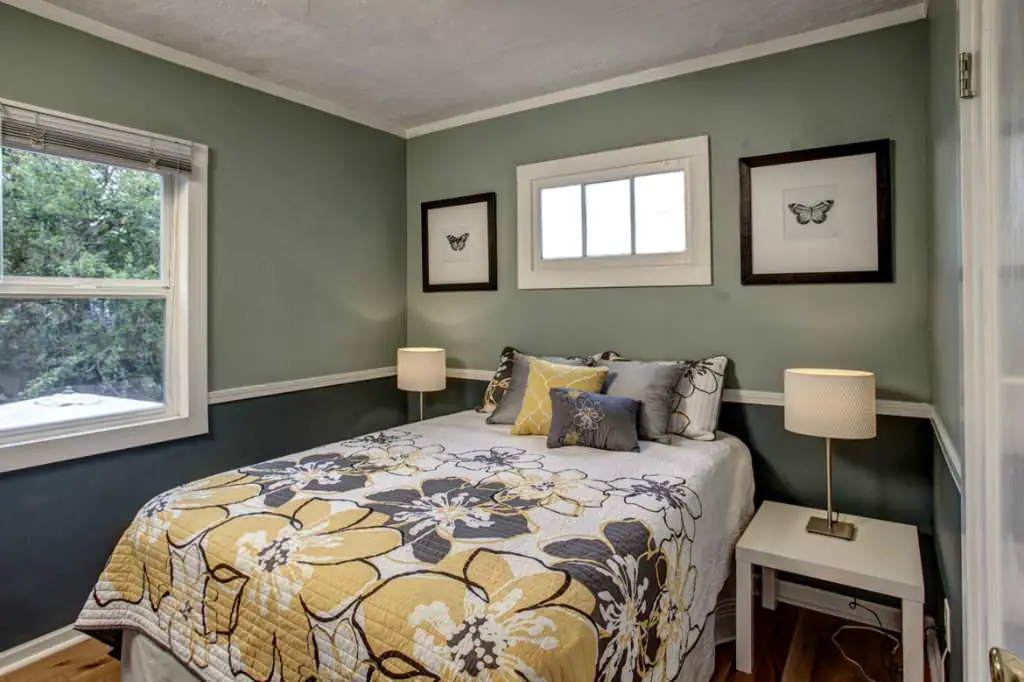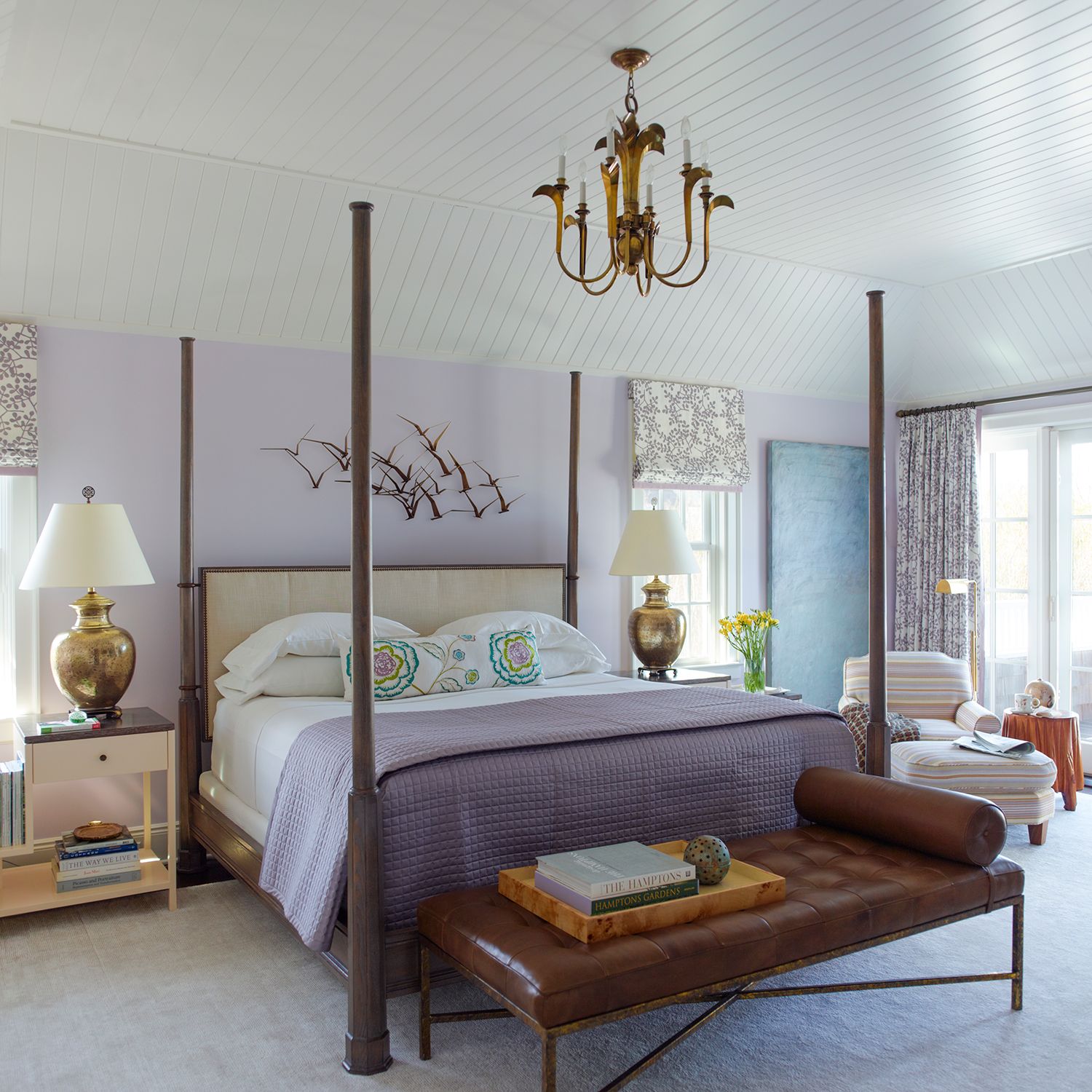Two-Tone Color Combinations for a Bedroom

Creating a harmonious and relaxing bedroom atmosphere is essential for a good night’s sleep. Two-tone paint schemes offer a simple yet effective way to achieve this, adding depth and visual interest while maintaining a sense of tranquility. By strategically combining two colors, you can create a bedroom that reflects your personal style and promotes a sense of well-being.
Classic Two-Tone Color Combinations for Bedrooms, Two tone paint ideas for bedroom
Two-tone color combinations are a versatile design element that can be adapted to suit various bedroom styles.
- White and Gray: This classic combination offers a clean and sophisticated look, perfect for creating a calming and minimalist bedroom. White provides a sense of spaciousness and brightness, while gray adds a touch of sophistication and warmth. The combination can be adapted to different styles, from contemporary to traditional, by varying the shades of gray and incorporating accent colors.
- Cream and Blue: This combination evokes a sense of serenity and tranquility, reminiscent of a spa-like atmosphere. Cream provides a warm and inviting base, while blue promotes relaxation and sleep. Different shades of blue can be used to create different moods, with lighter shades offering a more airy feel and darker shades creating a more dramatic and sophisticated ambiance.
- Beige and Green: This combination creates a warm and earthy feel, perfect for a bedroom with a natural or rustic theme. Beige provides a neutral backdrop, while green brings in a touch of nature and freshness. The combination can be further enhanced by incorporating natural elements like wood accents and houseplants.
- Pale Pink and Gray: This combination offers a romantic and feminine touch, perfect for a bedroom with a vintage or shabby chic style. Pale pink provides a soft and delicate backdrop, while gray adds a touch of sophistication and grounding. The combination can be further enhanced by incorporating floral patterns and vintage furniture.
The Psychology of Color and Its Impact on Sleep
Color psychology plays a significant role in creating the desired mood and ambiance in a bedroom. Understanding the psychological effects of different colors can help you choose the right combination for your specific needs.
- Blue: Blue is often associated with calmness, relaxation, and peace. It is known to lower blood pressure and heart rate, promoting a sense of tranquility and sleepiness. Lighter shades of blue can be particularly effective in creating a calming and airy atmosphere, while darker shades can create a more sophisticated and moody feel.
- Green: Green is associated with nature, growth, and renewal. It is known to have a calming effect on the mind and body, reducing stress and anxiety. Green can be a good choice for bedrooms as it promotes relaxation and helps to improve sleep quality.
- Yellow: Yellow is often associated with happiness, optimism, and energy. While it can be stimulating, it can also be overwhelming in large quantities. When used in moderation, yellow can be a good choice for a bedroom, adding a touch of brightness and cheerfulness without being overly stimulating.
- Red: Red is a stimulating color that can increase heart rate and blood pressure. While it can be energizing, it is not recommended for bedrooms as it can interfere with sleep. Red can be used sparingly as an accent color, but it should not be the dominant color in the room.
Tips for Choosing Complementary Colors
Choosing complementary colors that work well together is essential for creating a harmonious and visually appealing bedroom.
- Consider the Size of the Room: Lighter colors can make a small bedroom feel larger and brighter, while darker colors can create a cozy and intimate atmosphere in a large bedroom.
- Use a Color Wheel: A color wheel can help you identify complementary colors that work well together. Complementary colors are located opposite each other on the color wheel, creating a high contrast and visual interest.
- Test Colors Before Painting: It is always a good idea to test paint colors on a small area of the wall before committing to a full paint job. This will help you see how the colors look in natural light and how they interact with other elements in the room.
- Consider Personal Preferences: Ultimately, the best two-tone color combination for your bedroom is the one that you find most appealing and relaxing. Choose colors that reflect your personal style and create a space that you enjoy spending time in.
Creating a Focal Point with Two-Tone Paint: Two Tone Paint Ideas For Bedroom

Two-tone paint can be a powerful tool for creating visual interest and defining different areas in a bedroom. By using two contrasting colors, you can draw attention to specific features and create a sense of depth and dimension.
Using Color Blocking to Create a Focal Point
Color blocking is a technique that involves using two or more colors to visually divide a space. This can be achieved by painting a wall or section of a wall a different color than the rest of the room. For instance, painting the headboard wall a darker shade than the remaining walls can create a dramatic focal point and make the bed appear more prominent.
For example, painting the headboard wall a deep navy blue and the remaining walls a soft white can create a cozy and inviting atmosphere. The darker shade on the headboard wall will make the bed appear larger and more prominent, while the lighter shade on the remaining walls will help to brighten the room.
Incorporating Trim, Moldings, and Wallpaper
Trim, moldings, and wallpaper can be used to enhance the two-tone effect and add visual interest to the space.
- Trim: Painting the trim a contrasting color to the walls can create a clean and sophisticated look. For example, painting the trim a crisp white against a light gray wall can create a modern and airy feel.
- Moldings: Moldings can be used to add visual interest and define different areas of the room. For example, you could use chair rail molding to divide the lower half of the wall from the upper half, painting the lower half a darker shade than the upper half.
- Wallpaper: Wallpaper can be used to create a focal point on a single wall or to accentuate a particular feature. For example, you could use a bold patterned wallpaper on the headboard wall to create a dramatic focal point.